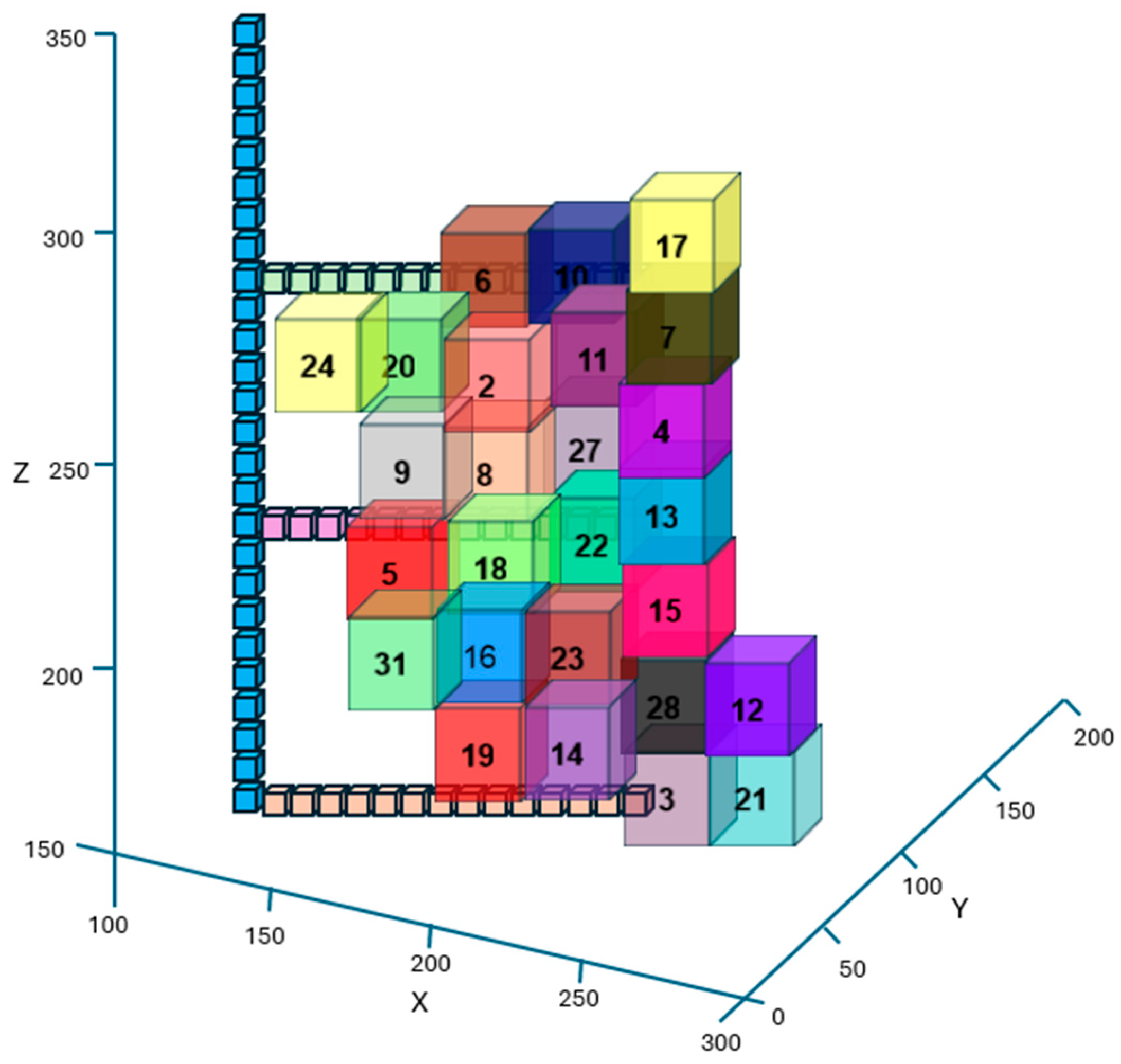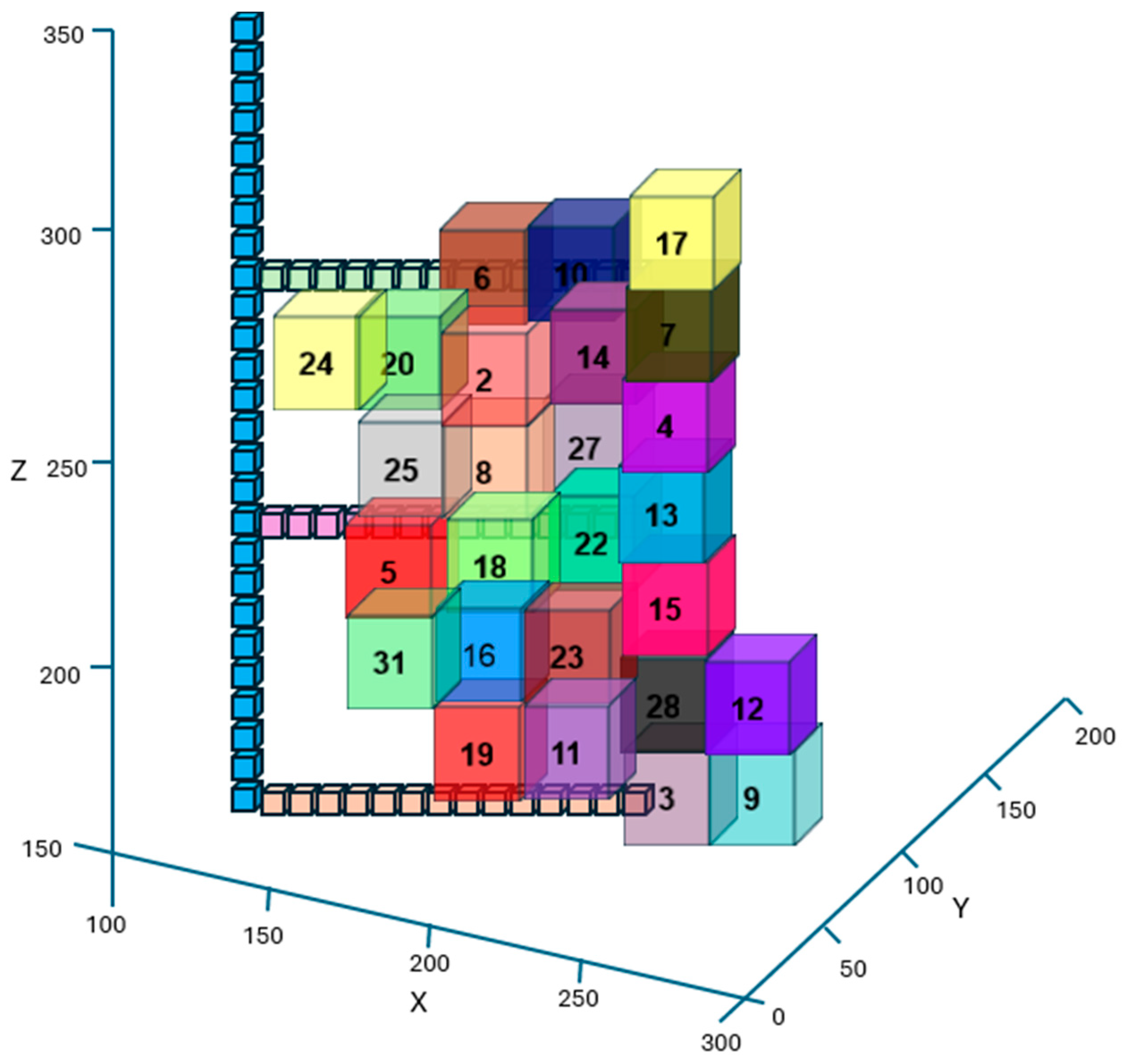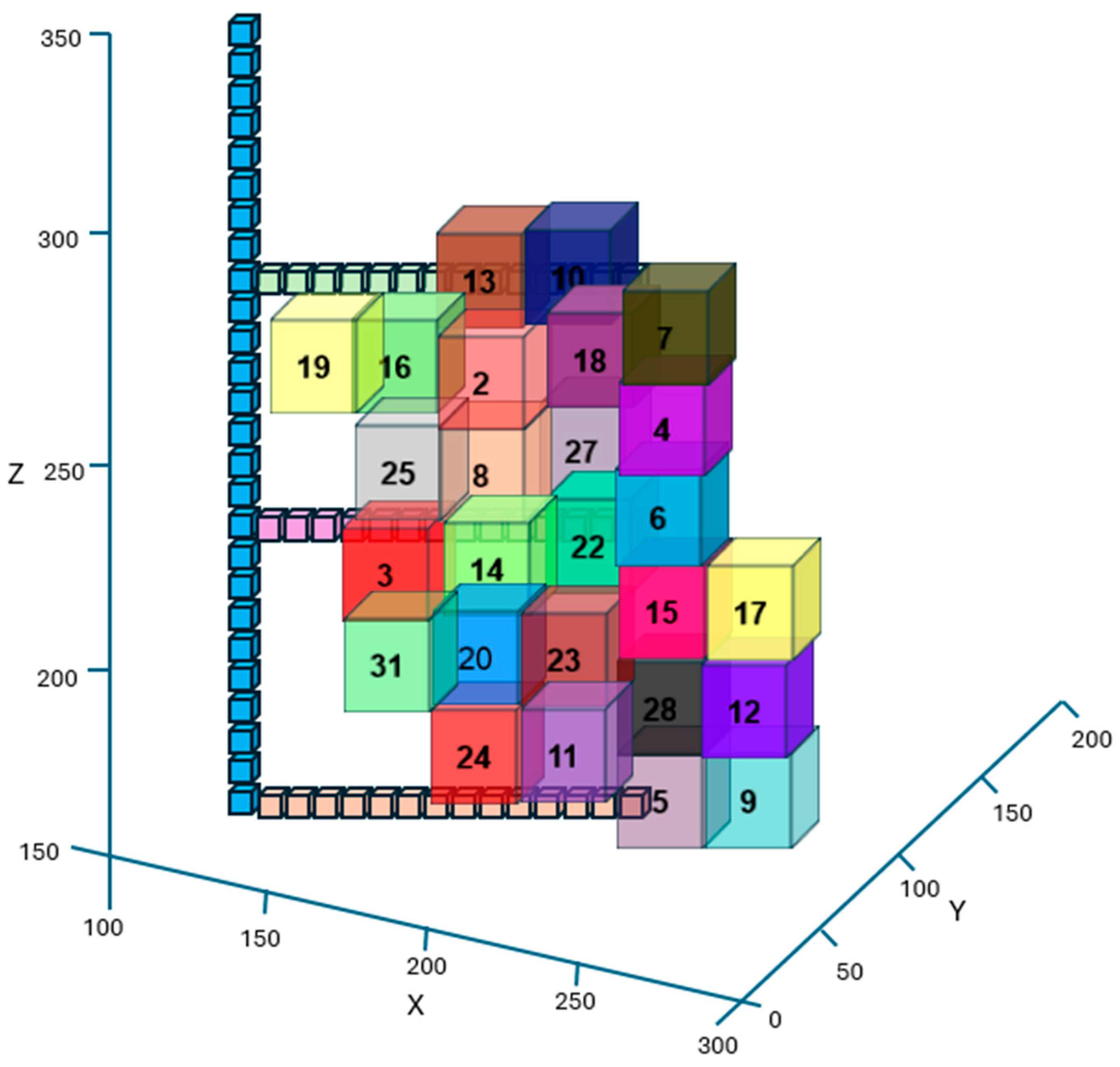In this study, a multi-objective optimisation model was introduced for sublevel stoping, considering both economic and environmental factors. The research evaluates the trade-off between economic and environmental aspects, with total costs representing the economic aspect and carbon emissions from energy consumption representing the environmental aspect. The NSGA-II is employed to assess this trade-off, and the details of the optimisation model are explained in the following section.
2.2. PARAMETERS
a: scaling coefficient
: proportion of preparatory work in the whole sublevel stoping mine
: diesel combustion conversion efficiency
b: decay coefficient
B1: average number of boreholes drilled by the drilling rigs
: the carbon emission factor of diesel, tCO2/J
: the carbon emission factor of electric energy, tCO2/kWh
: the carbon emission factor for industrial explosives used in mines, tCO2/t
: amount of greenhouse gases released during the pressurisation, drainage, and ventilation procedures used to treat a unit cube of rock mass tCO2/t
: corresponding carbon emission factor of the energy type consumed by the e type of equipment
: energy consumption per ton by the e type of equipment
E: number of equipment types used
: ore grade of stope s
H: number of LHDs (load, haul, dump)
i: discount rate
K: number of rock types
: full bucket coefficient of the LHD
: unit consumption of explosives for the same type of rock mass for preparation blasting kg/m3
: unit consumption of explosives for the same type of rock mass for ore blasting kg/m3
: power ratio coefficient of an engine under no-load and heavy load
: mining cost at time period t
: drilling efficiency of drilling rigs, m/h
: processing cost at time period t
: number of mixers and pumps for each type
: quantity of a particular kind of ventilator, drainage pump, and compressor units in operation
: ore tonnage of stope s
: metal price at time period t
P1: rated power of the drilling rigs, kW
: working power of a specific type of crusher, kW
: corresponding operating power of a particular kind of fan, drain pump, and compressor, kW
: rate power of LHDs, w
: rated power of each type of mixer, and pump, kW
: total daily ore and waste rock production in the sublevel stoping mine, t/day
: daily average rock mass extracted in a sublevel stoping mine using compressed air equipment, t/day
: daily average amount of ore crushed, t/day
R, U: types of mixers and pumps used in the process of mixing and pumping backfilling
: ore recovery at time period t
: Average density of ore
: average daily working time of a particular type of crusher, h
: average daily operating hours of a certain ventilator, drainage pump, and compressor, h
: average round-trip time of the LHDs, s
: average working time of mixer, and pump to complete a workflow, h
: bucket capacity for a particular kind of diesel LHD used in the mine, t
: treatment volume of the mixer, and pump in their respective single workflow time, t
v, d, a: quantity of ventilator, drainage pump, and compressor varieties
2.5. Economic Objective
Equation (1) [
16] expresses the objective function as the discounted revenue, which takes into account the ore grade, ore recovery, and tonnage of the stope.
where S is the set of stopes in the model, T is the set of time periods,
is the ore grade of stope s,
is the ore recovery at time period t,
is the metal price at time period t,
is the mining cost at time period t,
is the processing cost at time period t,
is the ore tonnage of stope s, i is the discount rate, and
is a binary decision variable, which represents whether a specific mining area (called a “stope”) is scheduled for extraction in a given time period. If extraction from stope s is scheduled in time period t, then
= 1, otherwise
= 0.
Carbon Emission Objective: The Intergovernmental Panel on Climate Change (IPCC) recommends the carbon emission coefficient method for carbon emission accounting, which has two calculating approaches: “top-down” and “bottom-up.” The “top-down” method sorts energy use within a given range and calculates carbon emissions by multiplying carbon emission coefficients after measuring consumption. The “bottom-up” method, on the other hand, directly measures the carbon emissions of each piece of equipment on-site. Due to challenges such as complicated settings and changing scenarios, the “top-down” method was adopted in this study to assess carbon emissions in the sublevel stoping mining stage of metal mines [
17]. Equation (2) [
18,
19] expresses the objective function of reducing the overall amount of carbon emissions that are produced by activities such as drilling, blasting, air compression, drainage, ventilation, transportation, processing, and backfilling. The precise details of these activities are as follows:
where S is the set of stopes in the model, T is the set of time periods, a is a scaling coefficient, b is a decay coefficient,
is the ore grade of stope s, E is the number of equipment types used,
is the energy consumption per tonne by the e type of equipment,
is the corresponding carbon emission factor of the energy type consumed by the e type of equipment,
is the ore tonnage of stope s, and
is a binary decision variable, which represents whether a specific mining area (called a “stope”) is scheduled for extraction in a given time period. If extraction from stope s is scheduled in time period t, then
=1, otherwise
= 0.
The first part of Equation (2) is the carbon emission from the processing plant, and the second part is the carbon emission from drilling, blasting, air compression, drainage, ventilation, transportation, crushing, grinding, and backfilling. The rules governing carbon emissions in mining operations led us to select electricity and diesel as the two primary forms of energy for carbon emissions in this study. During the mining stage, these energy forms are the primary sources of carbon emissions. The amount of explosives used during blasting should also be measured, as it is needed for completing sublevel stoping operations.
2.9. Modelling Carbon Emissions During the Transportation Process
Loading and hauling are critical components in mining operations. Miners employ underground loaders/trucks and/or LHD carriers to carry run-of-mine ore to processing areas while also removing overburden and waste materials from the mine site. The carbon emissions produced during the stope’s transit are exceedingly complex, owing to the dynamic nature of the stope’s position and scope, as well as the fluctuating distances travelled by the transportation equipment.
Moreover, the power consumption of mining equipment varies depending on the transit conditions, including heavy load, no-load, downhill, uphill, and vehicle performance. Computing the average round-trip time for mining and loading without regard to stope slope, vehicle performance, or equipment effect uses the transport distance parameter. The engine’s power ratio coefficient, λ, is defined when the mining truck is empty and heavy, with a value of 0.91 [
20]. Conventional LHDs run on fuel; hence, diesel is necessary for operation. Moving a unit rock mass with an LHD has a carbon emission model as follows [
19]:
where
is the total carbon emission during the transportation process measured in tCO
2/kWh,
H is the number of LHDs (load, haul, dump),
is the rate power of LHDs in w,
is the power ratio coefficient of an engine under no-load and heavy load,
is the average round-trip time of the LHDs in seconds,
is the carbon emission factor of diesel measured in tCO
2/J,
is the diesel combustion conversion efficiency,
is the bucket capacity for a certain kind of diesel LHD used in the mine, measured in tonnes, and
is the full bucket coefficient of the LHD.













